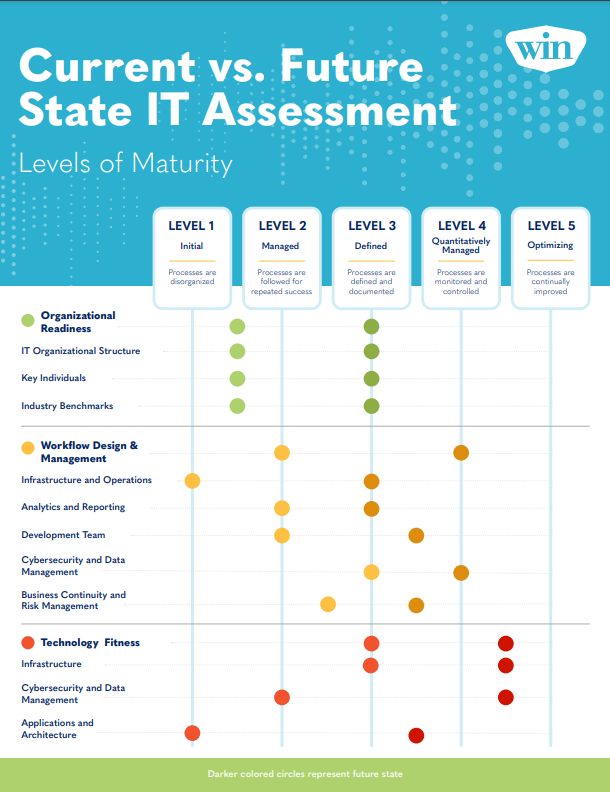Insurance providers face unique challenges
Between meeting specific regulations, maintaining standards, and responding to customer needs, insurance providers are challenged by the many demands of the industry.
To handle these unique requirements, many insurance companies have tailor made legacy systems that require a large IT staff to keep them responsive. Although these systems did, at one time, provide a competitive advantage, they are proving difficult to modernize and replace today.
As new threats from upstarts and developing technologies are beginning to reinvent insurance services, many insurance companies are unsure of the best steps to take moving forward.
The insurance industry is limited by custom-made software
Today, the insurance industry tends to rely on legacy systems and falls behind other sectors when it comes to software as a service and digital transformation. In addition to being difficult to maintain, legacy systems also have security and privacy concerns — creating issues in terms of regulatory compliance.
A high dependence on custom-made software will ultimately limit an insurance company’s ability to address changing environments and cause their ability to respond effectively to industry changes — or threats — to be highly dependent on the agility of their IT teams.
Improving IT spend
What many insurance companies don’t realize is that in an effort to “save” time and resources by holding onto outdated systems, they are really spending more maintaining old technology that is inevitably going to fail. As a result, many insurance companies find themselves spending more on IT than any other sector while also falling far behind other sectors in their technological environment.
Perhaps the most viable way to improve IT spending is to shift from a reactive approach to a proactive approach. In other words, rather than reacting to issues that arise, such as an equipment failure, companies should be proactive and replace equipment before it breaks.
Run, grow, transform
IT spending falls under many categories, and it can be helpful to understand how an organization’s level of spending compares with industry benchmarks. For example, if an organization is spending a higher percentage of its IT budget on running its business than its peers, it may be lacking in investments to allow the business to grow, or it may be falling behind in the innovations needed to keep up or exceed the competition.
Here at WIN, we like to place IT spending into one of three main categories: run, grow, and transform.
Run refers to ongoing support for the current level of business (“keeping the lights on”).
Growing the business means enabling business growth or improved profitability.
Transforming the business means empowering the business to gain new strategic advantages.
Understanding your organization’s IT maturity
The first step to moving from a reactive approach to one that’s proactive, is to understand where your IT ranks against maturity standards. Dimensions to measure include organizational readiness, workflow design and management, and technology fitness. From there you can assess your organization’s:
- IT Organizational Structure
- IT Workflows
- Key Individuals
- Infrastructure
- Cybersecurity and Data Management
- Applications and Application Architecture
- Business Continuity and Risk Management
Knowing where your company lands in these categories creates the opportunity to compare against your target maturity and prioritize activities to achieve it.

We can partner with you to help you modernize
If you’re planning for transformation and know your infrastructure isn’t where it needs to be, we can partner with you to identify the modernization efforts to get you there. Here at WIN, we utilize an organizational maturity model to locate where your IT organization ranks against maturity standards. Interested in learning more? Contact us at [email protected].
